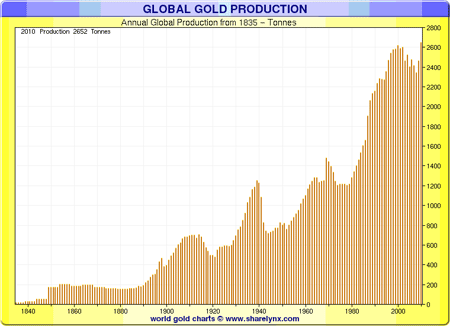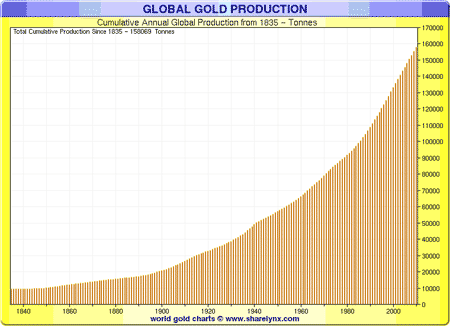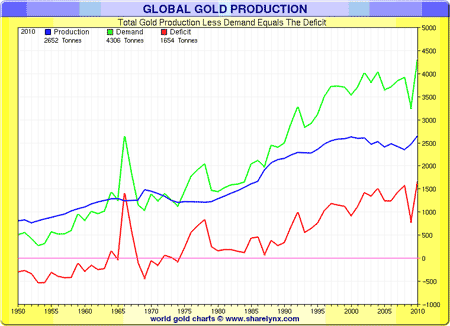The next big driver of gold's bull market – China's middle classes
The main drivers of gold's remarkable bull run are about to be joined by a major new source of demand - the appetite of China's middle classes. Dominic Frisby looks at the effect this is likely have on the price of gold.
There have been three main drivers to the secular bull market in commodities, be it copper, crude oil, or corn.
First, a chronic lack of investment throughout the bear markets of the 1980s and 1990s has led to a shortage of supply. Second, this shortage of supply has come just as eastern Asia, particularly China, is modernising and rebuilding its infrastructure.
And, third, our modern fiat system of money and credit makes inflation and speculation inevitable, especially when it is subjected to the insanely loose monetary policies of our central bankers.
MoneyWeek
Subscribe to MoneyWeek today and get your first six magazine issues absolutely FREE

Sign up to Money Morning
Don't miss the latest investment and personal finances news, market analysis, plus money-saving tips with our free twice-daily newsletter
Don't miss the latest investment and personal finances news, market analysis, plus money-saving tips with our free twice-daily newsletter
Generally speaking, most people cite driver number two, China, as the reason for the rise in the price of raw materials base metals, grains, energy the commodities that are being consumed voraciously as China's middle class grows. Gold, on the other hand, we are told, is rising mainly because of inflation and fears 'about the system' driver number three.
But what if you took 'driver number two' and applied it to gold? What if the Chinese middle class all wanted gold?
What if everyone in China buys an ounce of gold?
I'm asking this question now because a number of people have emailed me a report by Robert Lenzner for Forbes which says: "The People's Bank of China (PBOC) recommended yesterday (25 March) that one billion Chinese consider buying gold as a hedge against inflation".
I've been unable to substantiate this claim as, although I've found the report, it's in Chinese. But the Chinese government has in recent years promoted different gold funds, launched a global gold contract based in yuan by the Chinese Gold & Silver Exchange, bought into various gold mines and minted all sorts of bullion products, so it seems clear the Chinese are keen on some kind of gold ownership.
Of course, most Chinese people simply aren't rich enough yet to buy an ounce of gold. And I'm not sure it would be physically possible for everyone to do so. Only five billion or so ounces of gold have been mined in human history (or since 1835 at least). A billion Chinese people can't suddenly buy 20% of all the gold that's ever been mined.
But China's appetite for gold is certainly on the up. I had dinner recently with the head of precious metals at HSBC. Most internationally traded gold comes through his vaults at some stage. He said that, even although China is now the world's biggest producer, he sees hardly any Chinese gold coming through. In other words, China is not exporting, but hoarding all its own gold.
So it's worth considering the impact that increased Chinese buying of gold would have on the market by taking a quick look at some supply and demand numbers.
Demand for gold is outstripping supply
This first chart (my thanks as always to Nick Laird of www.sharelynx.com) shows annual gold production. Over the last 15 years it has ranged between 2,400 and 2,600 tonnes. That's about 80-90 million ounces.
So annual supply would be enough to buy, say, every single person in Germany an ounce each. (But certainly not every single person in China). And the rest of the world would have to go without.

This next chart shows cumulative gold production since 1835. During that time, as I mentioned above, something like 160,000 tonnes or five billion ounces have been mined.

(Interestingly annual gold production has roughly matched population growth, another factor that makes it a natural form of money).
But here's the clincher. Our third and final chart shows global gold production (the blue line) since 1950, and in green, global gold demand. In red at the bottom, we see the deficit this creates.

Interestingly, demand remained below supply until the early 1970s which was when the US took itself off the last vestiges of the gold standard. Since that time, demand has outstripped supply.
The deficit fell sharply in 1978, 1986, 1993 and 2008. Its sharpest rises came in 1965, 1974-1977, 1990-2, 2000-02, and 2010.
Here's that same chart in cumulative form.

It shows quite clearly the change that occurred in 1999, coincidentally just as Gordon Brown was selling our gold. Cumulative demand overtook cumulative production, and the deficit went into the red. That was the beginning of the bull market.
Chinese demand will keep the gold bull market going
The annual deficit stands at about 1,650 tonnes or about 53 million ounces. But the cumulative deficit now sits at around 14,000 tonnes. That 's roughly 450 million ounces over half an ounce for each person in China. So where on earth could their billion ounces come from?
I don't know about you, but in both the annual and the cumulative deficit charts above, I see what is known as a 'steadily rising trend '. It will take some kind of major event for example several multi-million ounce deposits coming into production just as a global revolution restores fiscal rectitude to government to reverse that trend.
In short, any increased buying by China 's middle class and it is buying already is just going to add to an ever-increasing deficit.
The bull market is alive and well.
And it's not just gold bullion which will benefit. Although riskier, there's also the junior gold miners. And one of my trusted colleagues has found one such company that is right on the border of China. Evidence suggesting there are others is everywhere, and you can see the latest mining and metal developments right here.
N.B. You'll see Portugal has just asked for a bail-out. We'll be looking at this tomorrow.
Our recommended article for today
Bill Bonner introduces his new book, 'Dice Have No Memory'
Every day for over a decade, MoneyWeek publisher Bill Bonner has written an essay on US and global economics. Now he has collected his essays into a book, Dice Have No Memory. Read his engaging introduction here.
Red Hot Penny Shares is a regulated product issued by MoneyWeek Ltd. Forecasts are not a reliable indicator of future results. Your capital is at risk when you invest in shares, never risk more than you can afford to lose. Penny shares can be volatile, relatively illiquid and hard to trade. There can be a large bid/offer spread so if you need to sell soon after you've bought, you might get less back than you paid. This can make them riskier than other investments. Please seek advice if necessary. 0207 633 3780
Get the latest financial news, insights and expert analysis from our award-winning MoneyWeek team, to help you understand what really matters when it comes to your finances.
MoneyWeek is written by a team of experienced and award-winning journalists, plus expert columnists. As well as daily digital news and features, MoneyWeek also publishes a weekly magazine, covering investing and personal finance. From share tips, pensions, gold to practical investment tips - we provide a round-up to help you make money and keep it.
-
 How cancelling unused direct debits could boost your pension by £37,000
How cancelling unused direct debits could boost your pension by £37,000A new year refresh of your spending could save you money and help boost your pension pot.
-
 NS&I cuts interest rates on 8 savings accounts
NS&I cuts interest rates on 8 savings accountsNS&I will now offer less attractive interest rates for customers wishing to lock their savings away to grow for one, two, three or five years.

